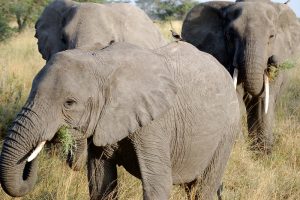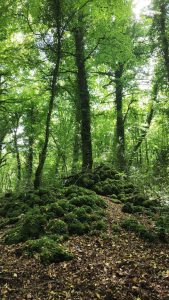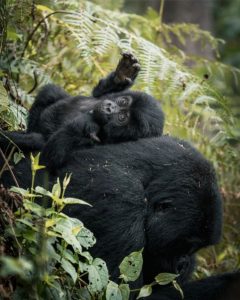Trekking and cultural tours in Rwanda.
It is an adventurous wildlife that involves hiking through dense forests in search of habituated mountain gorillas, allowing for close observation of these magnificent creatures in their natural habitat. It is a popular tourist activity in countries like Uganda, Rwanda, and the democratic republic of Congo. Trekking and cultural tours in Rwanda
Accordingly, gorilla trekking and cultural tours in Rwanda offer immersive experiences into the nation’s rich heritage, traditions, and community life. These tours go beyond typical sightseeing, providing opportunities to connect with local culture through interactions with communities, participation in traditional activities, and exploration of historical and artistic expressions.
Rwanda cultural tours
community engagement
cultural tours often involve visits to local villages where travelers can interact with residents, learn about their daily lives, and participate in traditional activities like farming, cooking, and craft making
Traditional arts and performances
Visitors can witness and even participate in vibrant traditional dances, music, performances, and storytelling sessions, gaining insights into Rwandan history and cultural identity.
Historical and memorial sites
Tours may include visits to sites like the Kigali genocide memorial, offering a sober yet important understanding of Rwanda’s past and its journey towards unity and reconciliation.
Artisan workshops
Travelers can engage with local artisans, learn about traditional crafts like pottery, basket weaving, and beading, and even participate in hands–on workshops.
Preservation and sustainability
Many cultural tours are designed to support local communities and promote sustainable tourism practices, ensuring cultural heritage is preserved for future generations.
Immersive experiences
Aim at creating meaningful connections between travelers and local people, fostering cultural understanding and appreciation.
Examples of cultural experiences
Ibyiwacu culture village
A living museum near Volcanoes National Park offering a glimpse into a pre–colonial life, traditional medicine, and Rwandan customs
Community-based tourism initiatives
Various projects across Rwanda offer authentic cultural experiences, often involving village walks, traditional performances, and interactions with the local communities.
Traditional dance performances
Introduce dance troupes and other groups, showcase vibrant and symbolic dances that are integral to Rwandan culture.
Exploring local markets
Visiting bustling markets provides a chance to experience daily life, interact with the local communities, and perhaps even try your hand at traditional cooking.
How many days are needed for gorilla trekking in Rwanda?
In Rwanda, it normally takes at least two to three days for a one-day excursion to be doable, but it is generally rushed and does not allow for adequate acclimatization before seeing the surrounding area.
Day 1
Possible if flying in very early and having a short trek, for this reason, it’s not recommended due to the potential for physical discomfort and then limited time for acclimatization
2 days of good balance for trekking and some exploration of the Volcanoes National Park
Day 3Ideal for a more relaxed experience, consequently including time for acclimatization, also potential visits to the Dian Fossey tomb or golden monkey tracking, and exploring nearby cultural sites
Day 4
Suitable for combining Rwanda with other attractions, or those who want to explore more of the region. How much does it cost to trek with gorillas in Rwanda?
It costs $1500 for international visitors. Further, more. This is the primary cost, and other expenses like accommodation and meals will add to the overall cost of a gorilla trekking safari.
Permit
It is the most significant expense, costing $1500 per person
Accommodation
Prices vary greatly depending on the type of accommodation chosen, ranging from budget-friendly options around $1500 per night to luxury lodges exceeding $500 per night.
Transportation
It can vary depending on whether you choose private vehicles or domestic flights, with options like a round trip to Volcanoes National Park potentially costing around $540, and above all, this depends on one’s choices and comfort level, which could satisfy him or her.
Additional costs
Consider costs for meals, visas, and optional activities like hiring a porter typically cost around $20 per trek.
What is the best time of year to go see gorillas in Rwanda?
Less rainfall occurs during the dry seasons, which are from June to September and December to February. These periods offer the most comfortable trekking conditions due to less rainfall and mud, because the access to gorillas is easy, and photography for good pictures because the dry seasons mean less rain, making the trails easier to navigate and vegetation less dense, improving visibility.
More comfortable trekking
The reduced rainfall also means less mud, which makes the hike to see gorillas more enjoyable. Because of easy hiking after all, without rain and mud, which might make it difficult
Easier visibility
Thin vegetation during the dry season makes it very easy to spot gorillas, however.
Gorilla trekking is possible year-round, but the dry seasons offer a more pleasant experience because even during the dry seasons, it’s wise to be prepared for potential rain and pack accordingly.
Gorilla families in Rwanda
Agashya family
Known for its large size and history of dynamic group behavior
Umubano family
Formed after a split from the Amahoro family, known for its unique history and interactions between silverbacks
Hirwa family
Named Lucky in Kiryagwanda, known for its attractive characteristics
Bwenge family
Formed after a split from the Titus family, Bwenge is known for its unique history and location near Karisimbi.
Titus family
The gorilla family group that was the focus of Dian Fossey’s study
In conclusion
The best gorilla family to see is the one that best aligns with personal preferences and trekking goals, leading to memorable experiences and satisfaction.




